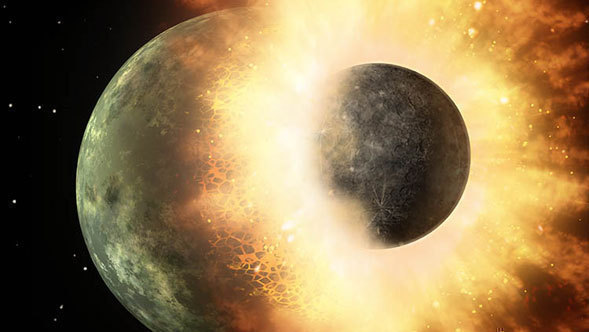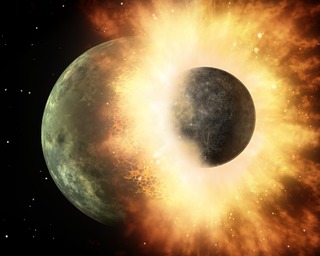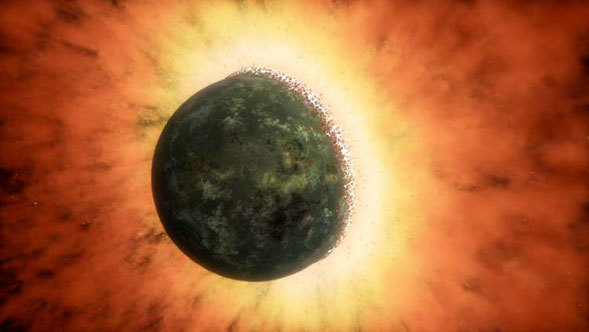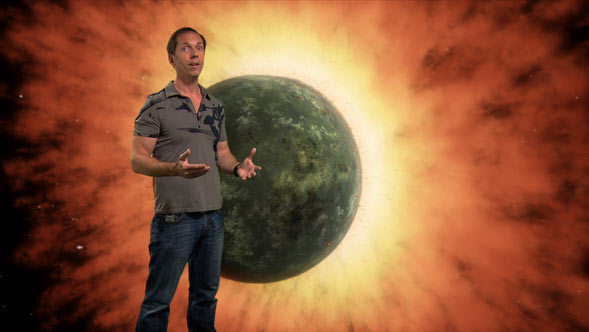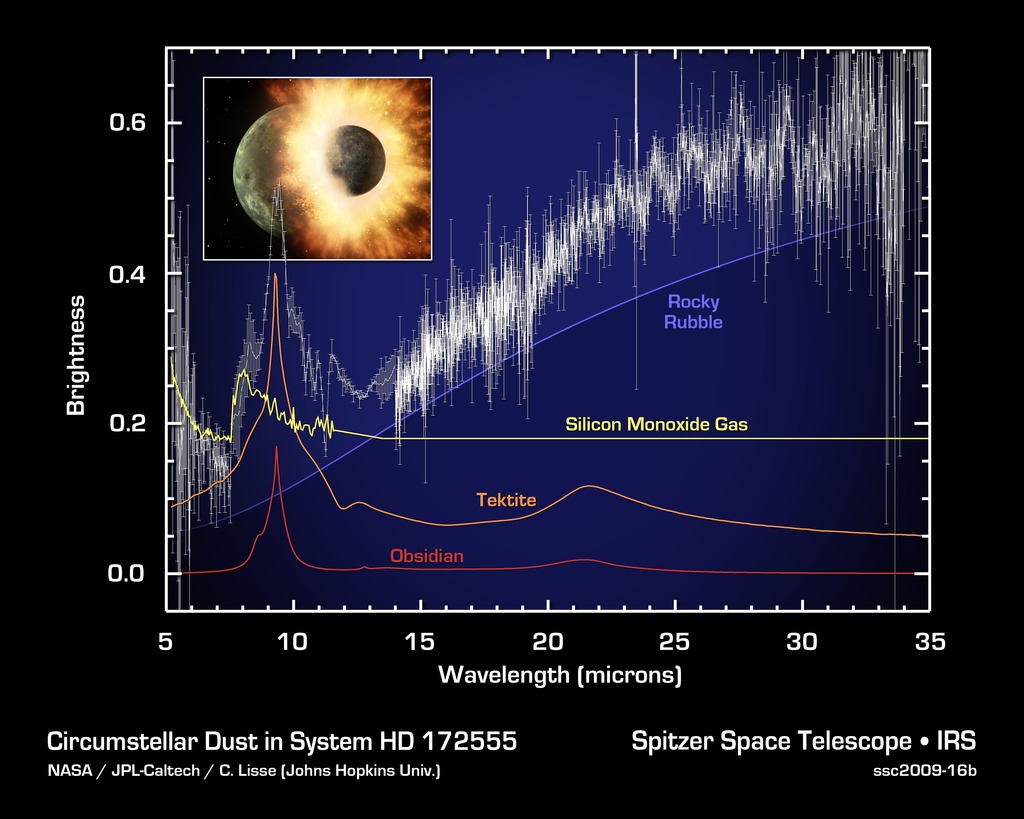
Credit: NASA/JPL-Caltech/C. Lisse (Johns Hopkins Univ.)
Chart • August 10th, 2009 • ssc2009-16b
ssc2009-16b
This spectrum, or plot of infrared data, from NASA's Spitzer Space telescope reveals the presence of vaporized and melted rock, along with rubble, around a young, hot star. The star, called HD 172555, is about twice the mass of the sun and about 100 light-years away. The data indicate that two bodies at least as big as our moon slammed into each other in a high-speed collision around the star. Impacts of this sort are normal part of the growth process of rocky planets like Earth.
Infrared light, or heat radiation, comes from materials around a star that are warmed by starlight. These materials re-radiate the light at characteristic wavelengths unique to the chemical composition of the material, allowing astronomers to figure out what kind of stuff is in orbit around a star, even from many light-years away.
In the case of the this spectrum, there are strong, wide peaks at 4 and 8 microns due to silicon monoxide (SiO) gas, formed when rock is heated so much it evaporates. The much larger and sharper peak centered at 9.3 microns is characteristic of amorphous glassy silica (a material similar to quartz or window glass), which is formed when rock is melted and then refrozen. When the rock is refrozen quickly it forms a substance called tektite; when is cools over minutes to hours, it becomes obsidian. The long, slow rise and plateau from 14 to 35 microns is from thick, pebble-size or larger cold rocks -- essentially rubble.
The total brightness of the spectrum indicates that the colliding bodies must have both been at least as big as our moon. The shape of the rubble feature tells us that the large pieces of rock are at about 200 Kelvin (about minus 100 degrees Fahrenheit), and about 5.8 astronomical units from the star (one astronomical unit is the distance between Earth and the sun).
About the Object
- Name
- HD 172555
- Type
- Star > Circumstellar Material > Disk > Debris
- Distance
- 100 Light Years
Color Mapping
| Band | Wavelength | Telescope |
| Infrared | 5.0 µm | Spitzer IRS |
| Infrared | 35.0 µm | Spitzer IRS |
